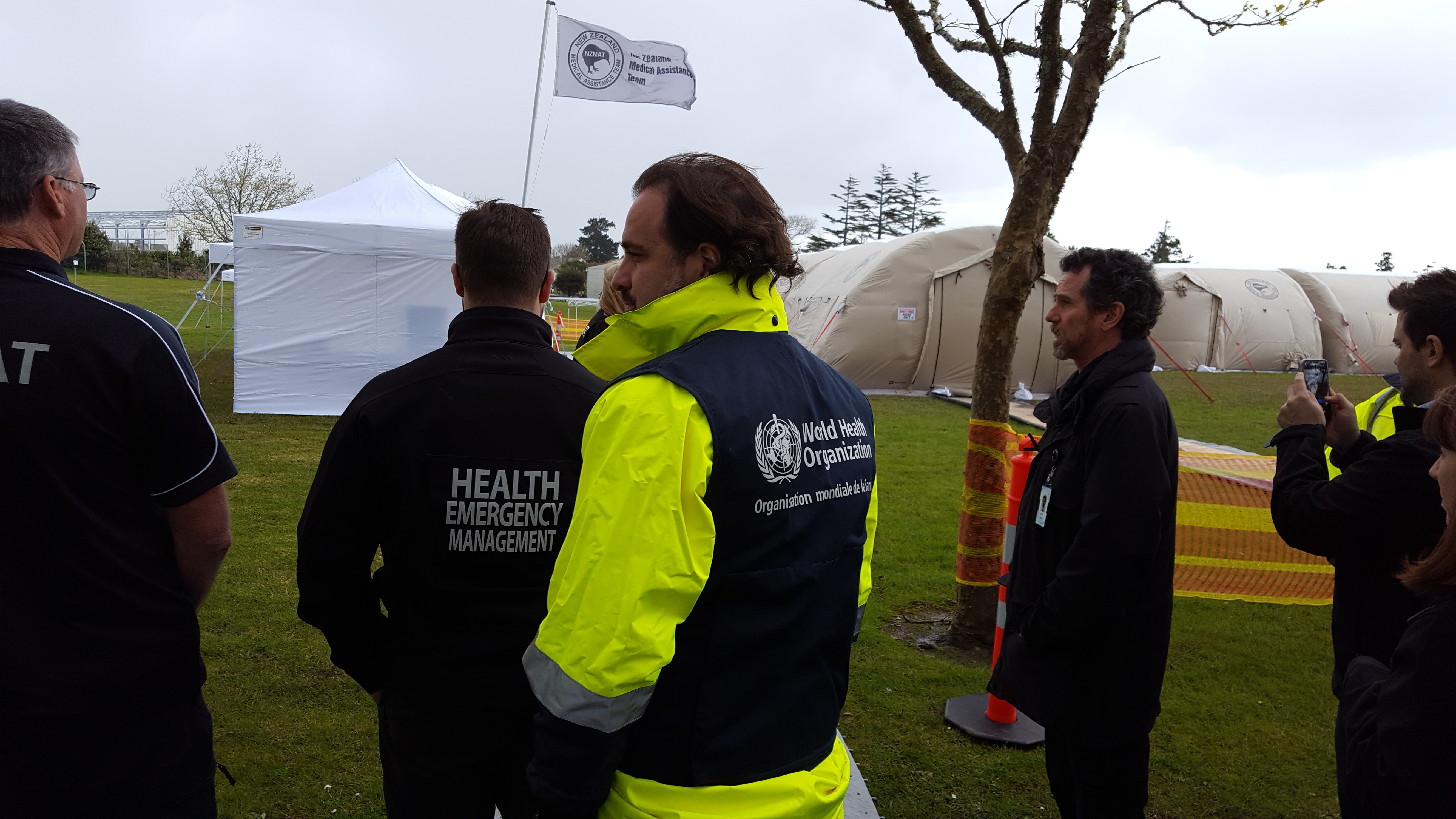
This week the WHO Emergency Medical Teams (EMT) Secretariat held a ceremony to recognize the international classification of the New Zealand Medical Assistant Team (NZMAT)ÔÇöadding to the global number of self-sufficient teams ready to be deployed to health emergencies should the need arise.
NZMAT received classification for both Type 1 fixed and Type 1 mobile teams, meaning their teams have the capacity to provide outpatient care in both a fixed health facility that can serve over a hundred patients a day and through mobile teams which can access remote areas and provide outpatient services to over fifty patients a day. NZMAT is the second team in the world to receive international classification for a type 1 mobile team.
ÔÇ£Receiving the international classification from WHO is a culmination of the years of hard work weÔÇÖve put into building the capacity of our teams. New Zealand and our Region are vulnerable to a wide range of emergencies and hazards and this is why it was so important to strengthen our ability to provide quality and timely treatment to help save as many lives possible if and when disaster strikes.ÔÇØ said Ministry of Health Emergency Management Director Charles Blanch
NZMAT is a civilian-based disaster medical assistance team comprised of clinical and allied staff that include doctors, nurses, paramedics, allied health, and non-medical members such as logisticians. The team is no stranger to responding to emergencies in the Region having responded to Typhoon Haiyan in the Philippines in 2013, the dengue outbreak and flash flooding in the Solomon Islands and more recently to Cyclone Pam in Vanuatu in 2015 and Cyclone Winston in Fiji in 2016.
ÔÇ£We congratulate the New Zealand Medical Assistance Team on its achievements and are very grateful for their commitment to the classification process. Their future assistance to those in need is no doubt a significant contribution to emergency resilience especially in the Western Pacific Region.ÔÇØ said Dr Ian Norton, Manager of the WHO EMT Secretariat during the ceremony held at the WHO Western Pacific Regional Meeting for Strengthening Emergency Medical Teams.
A global directory of all classified EMTs is held by the WHO EMT secretariat, to help speed up the mobilization and coordination of teams in the event of an emergency. Countries can call upon bilateral support from these teams, providing self-sufficient well trained groups of clinicians, field hospitals, outbreak response teams, and other forms of responders
About the WHO EMT Initiative
In 2013, the WHO convened the global EMT community to develop an EMT classification system along with minimum quality standards and principles. Effective in Typhoon Haiyan in the Philippines, West African Ebola, Earthquakes in Nepal and Ecuador and Cyclones in Vanuatu and Fiji, EMTs have saved thousands of lives and reduced deaths. The WHO EMT initiative now means governments and populations affected by emergencies and outbreaks can be assured of a predictable, timely, and coordinated response by self-sufficient teams with well-trained health personnel
